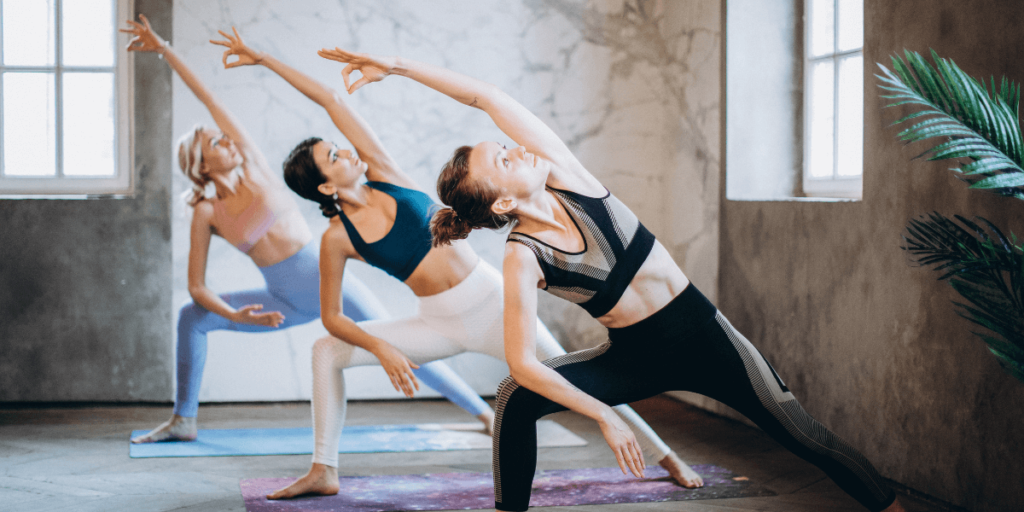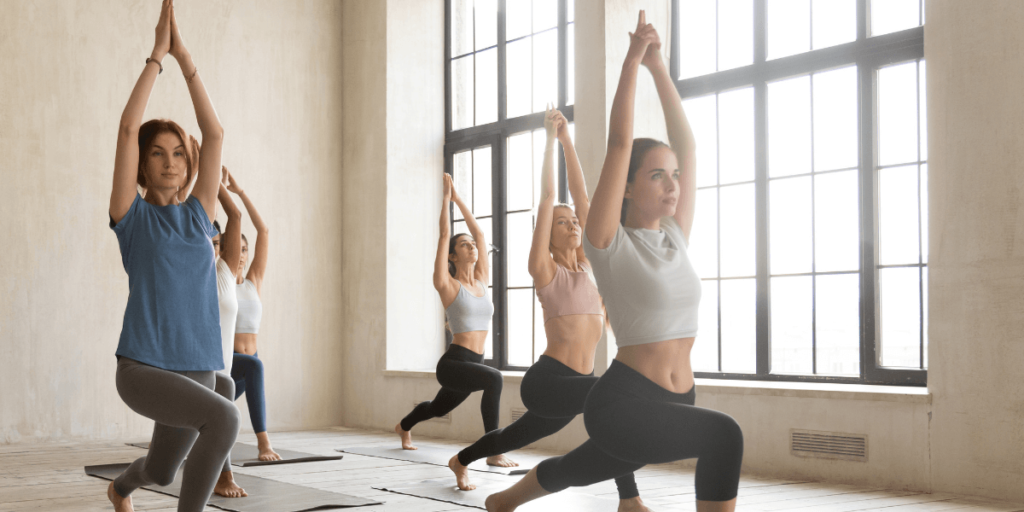Are you searching for a change and want to increase the intensity of your flow? Well then, you’ve come to the right article because Ashtanga yoga is the way to go!
Definition of Ashtanga Yoga
Ashtanga Yoga is an ancient tradition passed down through generations by gurus and instructors. Ashtanga comprises two Sanskrit words: “Ashta” and “Anga.” “Ashta” means the number eight, while “Anga” corresponds to a limb or physical component. As a result, Ashtanga is the unification of the eight limbs of Yoga into a single, comprehensive, and holistic discipline.
These eight limbs of Yoga represent various components of the yoga sutras’ philosophy, which serves as the Ashtanga Yoga School’s foundation.
Yama (moral principles), Niyama (self-discipline), Asana (posture), Pranayama (breath control), Pratyahara (sensory withdrawal), Dharana (concentration), Dhyana (meditation), and Samadhi are the eight limbs of Yoga (oneness with the self).
Ashtanga yoga is a style of Hatha Yoga that consists of six series or levels of postures performed in a prescribed order. It’s built around vinyasa, or flowing movements between poses, focusing on energy and breath. It is a physically rigorous practice that cultivates mental clarity and inner peace.
History of Ashtanga Yoga
The history of Ashtanga yoga is fascinating. Patanjali, an ancient guru who summarized Ashtanga Yoga in the Yoga Sutras, wrote the oldest surviving particular literature. The eight limbs of Yoga, according to Patanjali’s teachings, are the path to ultimate enlightenment. The current history of Ashtanga Vinyasa Yoga may be traced back to the legendary Yoga Teacher Krishnamacharya, who received the practice from Ramamohana Brahmachari, a yoga teacher near Lake Manasarovar in Tibet.
Aside from the present history of Ashtanga Vinyasa Yoga, Krishnamacharya was able to locate an old copy of the Yoga Korunta in the old National Archives of India in Calcutta, which detailed philosophies, asanas, bandhas, and many other aspects of Ashtanga yoga. This was passed down to Sri K. Pattabhi Jois, who studied and taught under Krishnamacharya for many years. Before passing away in 2009, Sri K. Pattabhi Jois was primarily credited with popularizing modern Ashtanga Yoga by founding the Ashtanga Yoga Research Institute and dedicating his life to the practice.
He taught Yoga all over India and passed down his techniques to devotees, including a Belgian man who helped to popularize Ashtanga Yoga in the West. Students would travel to Mysore, where Pattabhi Jois was located, on pilgrimages to spread the message of Ashtanga Yoga. And that is where Ashtanga yoga spread throughout the world.

Fundamental Principles and Yoga Practices
The Ashtanga yoga practice is based on several fundamental principles. This multi-pronged strategy supports both physical and emotional wellness. For an effective ashtanga practice, these five principles are required.
- Vinyasa– Synchronizing the breath with the series’ postures and transitions is the foundation of the practice.
- Bandha– Bandhas, or body locks, are encouraged to seal in prana energy and develop core stability throughout the lesson.
- Drishti– Each asana has a distinct Drishti, or focus point for which it assists in the development of more concentrated and contemplative practice.
- Ujjayi Pranayama– Throughout the practice, this exact breathing method is employed. The conquering breath is a slow, audible breathing method for warming up, energizing, and improving attention and concentration. Additionally, advanced participants are essentially given different pranayama methods.
- Daily Practice– A six-day-a-week regimen is recommended, with Saturday as a day of relaxation. “Moon says,” or the days around the full and new moon, are also rest days, and many women avoid practicing during their periods.
Difference of Ashtanga Yoga Among Other Types of Yoga
Unlike Hatha Yoga and Vinyasa Yoga, Ashtanga is a more dynamic, fast-paced practice with coordinated positions in which movement and breath are linked. It is a set sequence of asanas, while vinyasa is more free-style and improvised. Ashtanga classes begin and end with the class chanting Sanskrit mantras.
Due to its intensity, it may feel more like a cardio exercise than a peaceful yoga practice. But you should not allow this intensity to stop you from giving it a shot. Begin now, and definitely, you’ll get many stress-relieving and therapeutic effects.
Purpose of Ashtanga Yoga
The intensive physical processes in Ashtanga are all about breaking through mental blocks and emotional baggage to develop and maintain mental clarity, mindful breathing, physical strength, flexibility, and endurance.
The structure and regularity of the exercise are intended to help you swiftly enhance your body and overall wellbeing. The posture sequence offers a sturdy foundation that allows one to focus on the inner limbs of the yoga sutras.
Benefits of Ashtanga Yoga

Promotes Healthy Eating
Regular yoga practice was linked to mindful eating, according to a 2009 research study. Mindful eating, also known as intuitive eating, involves paying great attention to hunger cues to select when and what to eat instead of dieting.

Strengthens Your Muscles
A small 2012 study of healthy premenopausal women found that practicing Ashtanga twice a week for eight months boosted muscular leg strength compared to those who didn’t.

Make You Calm
Controlling your emotions, breathing patterns, and gaze simultaneously improves concentration and calms your autonomic nervous system, which regulates heart rate, respiration, and blood pressure.
It also enhances one’s sense of wellbeing. People who practiced Ashtanga twice a week for nine weeks had higher self-esteem and lower depression and anxiety symptoms, according to a small 2017 study.

Eases Pain
In a 2017 study, low-income adults who practiced yoga once a week for 12 weeks experienced the same reduction in persistent back pain as those who received physical therapy.

Is it Possible For Beginners to Do Ashtanga Yoga?
Ashtanga yoga is not the most incredible Yoga for newbies to practice, but beginners can try it. You’ll be able to observe your changes and development because it delivers specified and planned motions. It’s also beneficial because the major sequences begin with movements and postures that are more appropriate for beginners.
The entire series, also known as Yoga Chikitsa or Yoga Therapy, focuses on centering and establishing a solid and healthy body in preparation for the more complex sequence that follows.



